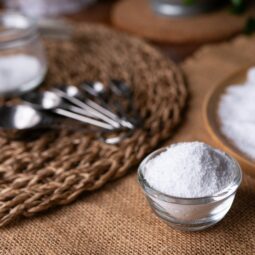
With the return of longer days and warmer weather, we’re all itching to get outside. But if your foray into the great outdoors is followed by a red rash a day or two later, you may be in for more itching than you bargained for.
Rashes caused by poison oak, poison ivy and poison sumac are very common in the spring and summer, when these plants are in bloom. That doesn’t mean you’re out of the woods the rest of the year; the irritating, oily sap produced by the leaves, flowers, berries, and even the roots and branches of these plants can trigger allergic reactions year-round.
Here in western Oregon, poison oak is the most plentiful of the three itch-inducing plants. Just the slightest skin contact with the plant, or even with a pet or an object that has picked up its sticky oil, can bring on a red rash within 12 to 72 hours, followed by itching, swelling, and oozy, crusty blisters. Though not usually serious, it can be seriously annoying.
While you wait for the rash to clear up — usually in a week or two — there are several things you can do to tame the itching. The Portland Clinic’s pharmacy team offers these tips:
Keep it clean
If you think you’ve come into contact with one of these plants, wash the affected skin as soon as possible with soap and water or rubbing alcohol to remove the oil. Keep the area clean and dry.
Don’t scratch
As hard as it is, resist scratching your blisters, which can lead to infections.
Try natural approaches
- Apply a cold compress for 15-30 minutes, as needed, to relieve itching.
- Soak in an oatmeal bath for 30 minutes, using finely ground oats (you can grind them in a blender) or preparations found in pharmacies to calm and protect your skin.
Find itch-relief in the pharmacy
- Hydrocortisone 1% topical cream is a steroid that can help with mild itching, but don’t use it for more than a week or two. If your rash hasn’t cleared up by then, seek medical attention.
- Oral antihistamines may help with itching, but read the labels — some types, such as Benadryl, can make you very sleepy.
- Calamine lotion can help in two ways: by relieving itching and by helping to dry out the blisters.
Be careful with other creams
While hydrocortisone cream can be helpful, other types of creams may worsen the rash. Specifically:
- Don’t use antihistamine creams (oral antihistamines are OK)
- Don’t use anesthetic creams (such as Benzocaine)
- Don’t use antimicrobial creams (such as neomycin and bacitracin)
Lose the ooze
Several over-the-counter products can help dry out a rash that has started to weep and ooze. They include:
- Calamine lotion
- Aluminum acetate (Burrow’s solution)
- Aluminum sulfate
- Calcium acetate
See your health care provider if your rash:
- Is severe or doesn’t get better in 14 days
- Has pus in it
- Spreads to your eyes, mouth or genitals
While just about everybody is allergic to poison oak, your sensitivity may decrease as you get older, or with repeated exposure. But who wants repeated exposure?
We recommend avoidance as the first line of defense:
Know what you’re getting into
Before you hit the trail, learn how to identify poison oak and its noxious cousins so you can spot it and avoid it.
Dress for success
When you’re going into an area known for poison oak, ivy or sumac, wear a long-sleeved shirt, long pants and closed-toe shoes, and wash up with soap and warm water as soon as you get home.


